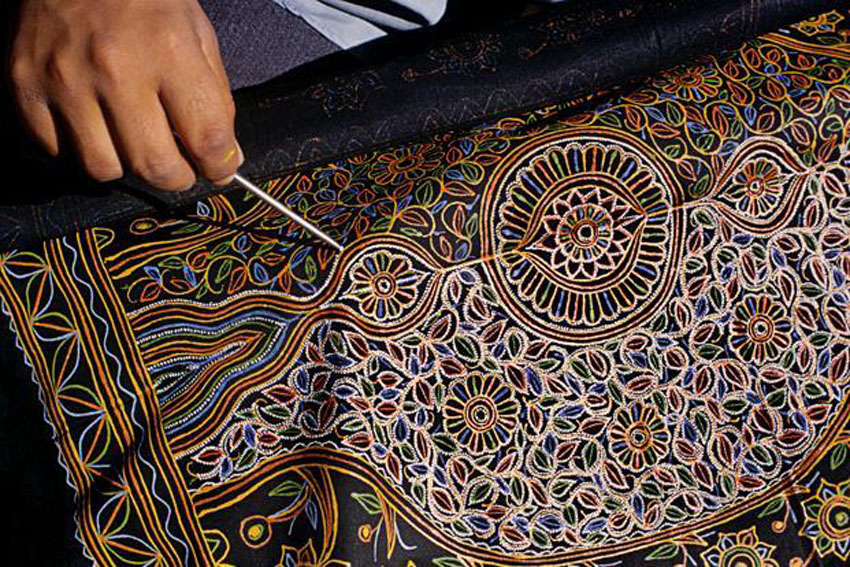
Abdul Ghafoor Khatri lives on the brink of giant salt lakes in the middle of nowhere in western India. He does not have a smartphone. He never went online. Still, the 53-year-old man believes that the global network could be his last chance to return life to the passing art called “rogan”, which was transmitted in his family for eight generations. And he is ready to seize this chance.
If I can sell online, the demand will also go up.
Says gray-haired master, one of the last owners of the craft, using thick bright natural paints for applying complex motifs on the fabric. Now Abdul Gafur exhibits his products only in the surrounding poor villages, where many already have a mat or shawl, made in the style of rogan. But Khari and his fellow artisans have a big plan.
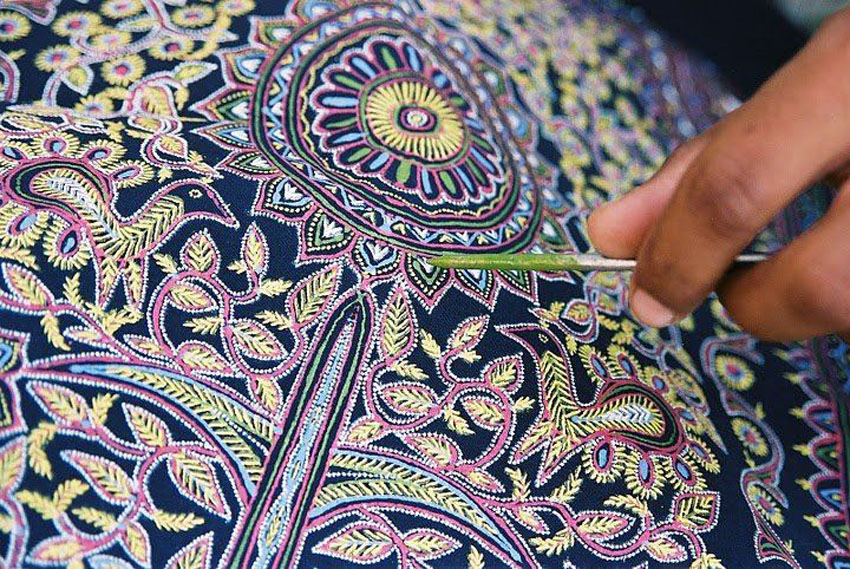
On a hot sunny day, Abdul Ghafoor with a dozen other masters come to the city of Bhuzh, one of the few large cities in this remote region of the country. In local markets, thousands of Indians sell their own crafts. But this time, Khatri has another goal. Amazon is happy with a lecture for talented artisans today - doing something that no online retailer had thought of before. The world's largest online store personally comes and offers craftsmen to start selling products through it. And teaches those who have never used the Internet how to sell their own products online.
This is one of the hallmarks of a global battle that Amazon is now leading for the most delicious market in Asia (and, potentially, in the world). China will not succeed. There are walls of the Alibaba Group and the Communist Party. But if you get India together with America, you can not worry that someone in the future will become bigger than you.
Since 2016, this task has been allocated $ 5.5 billion. But Amazon bet outlined Walmart with its unexpected purchase of Flipkart for $ 16 billion. Amazon and he would gladly have bought the largest Indian Internet marketplace for any money - but Flipkart managers were afraid that the deal will not approve the Indian government. As a result, Amazon has to make its way on a strange, very different from America market in the home. Yes, and now fight with the bottomless pocket of Walmart, which wants to stop it, and officially announces that its goal in this whole business is to stop the expansion of Amazon.
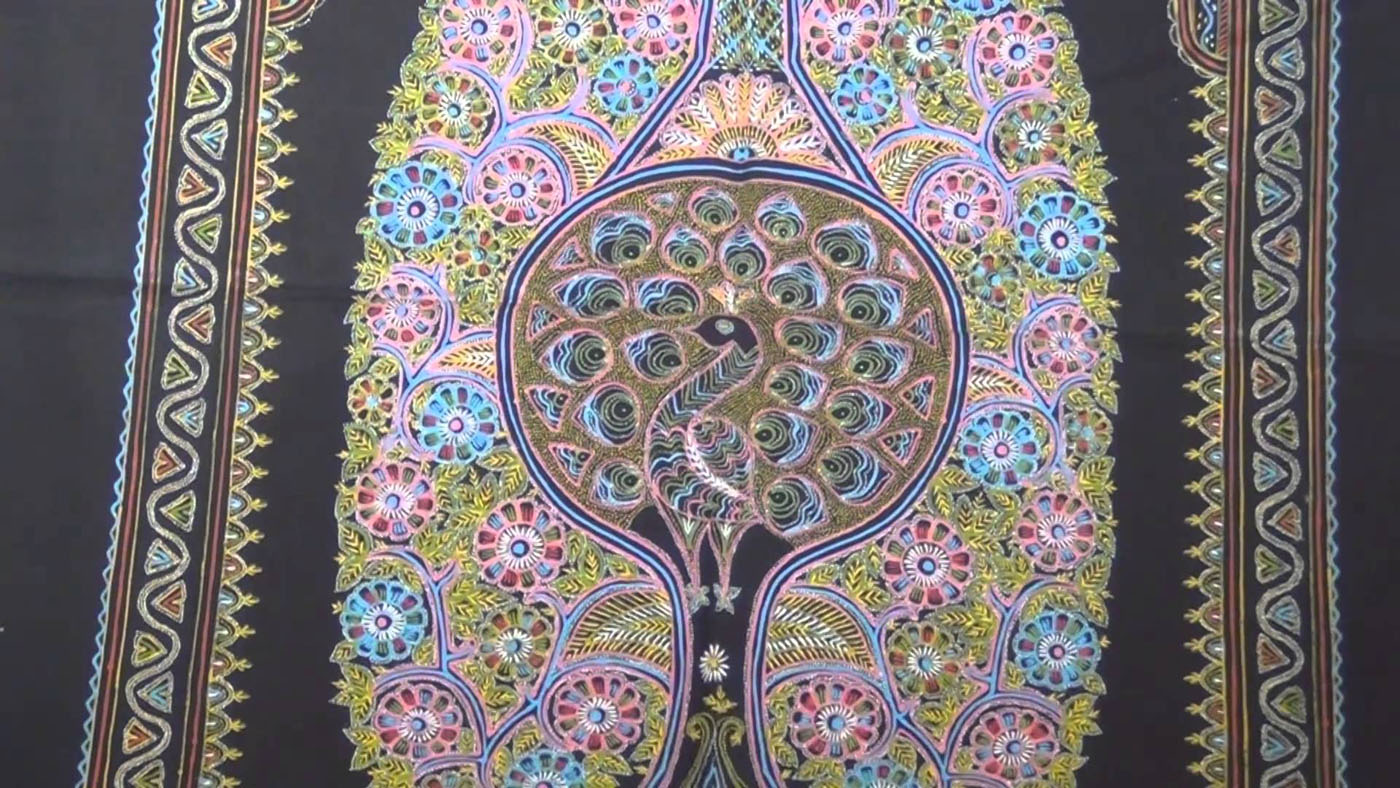
So now the company's employees massively recruit such strange suppliers from the wilderness for their online store. From here fifteen hours drive to the main centers of commerce. But what is taken for granted in villages can be a valuable commodity in Mumbai or Delhi, and this can be a decisive trump card in the battle for the market.
With the help of talented artisans, Amazon.in wants to increase the attractiveness of its portal among the Indian public, and earn the same trust that Flipkart has. He will begin to offer hundreds of handmade art objects that no one else has online. But first - you need to somehow attract the masters. Therefore, one of the most high-tech companies in the world conducts training classes for Abdul Ghafur Khatri and others. They sit in the hall as diligent students, and try to understand the most difficult thing for themselves - how with the help of a smartphone you can sell your items to customers who are thousands of kilometers away.
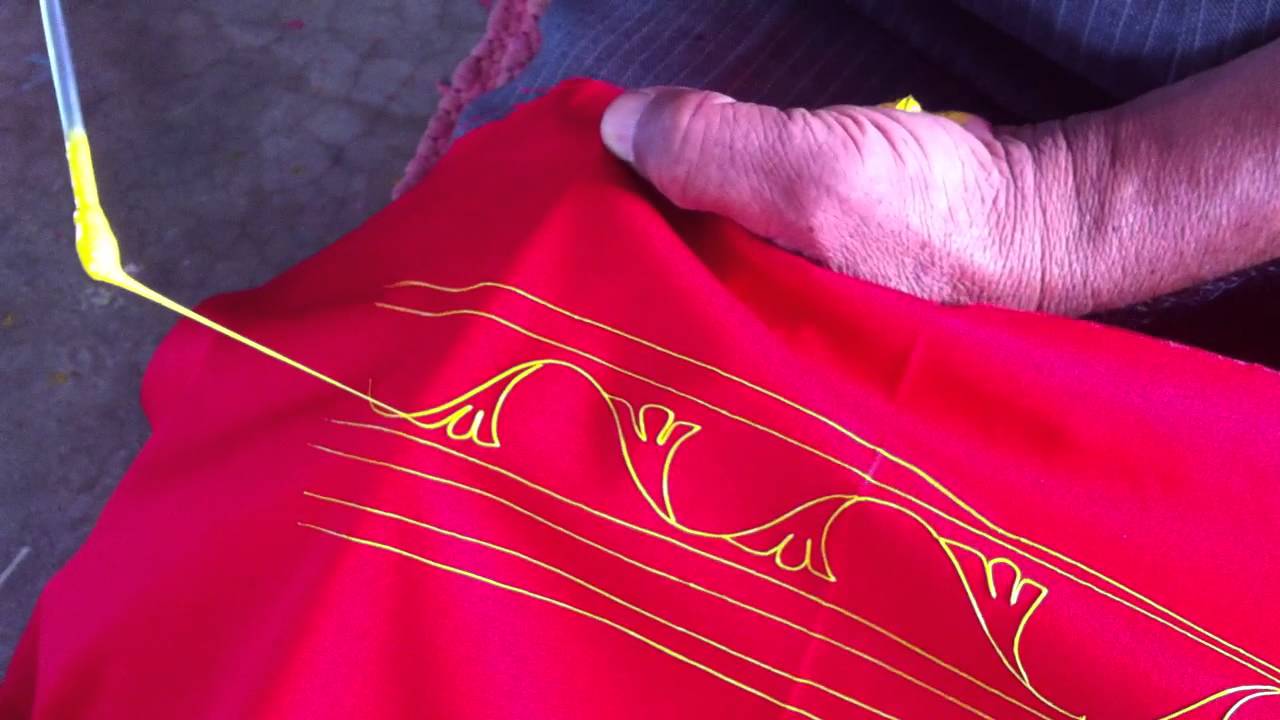 Paint rogan
Paint roganLectures are held in the language of artisans. In the city of Bhuzh, this is Gujarati. They explain that Amazon undertakes to wire payments and returns of goods. Local wedding photographers come to artisans to capture their products. Internet cafe operators individually teach the masters how to use the Amazon application. Sending drivers for the goods - also on the online store. Some cars go two or three hours off the road to take a picture, a jug or tippet with a special fringe.
A lesson before the masters is conducted by Aditya Agarwal, the head of a local company that signed a contract with Amazon to conduct trainings:
All you need is a bank account, tax number and internet connection.
Men and women sit on floor mats. Agarwal says that now they will receive help with registering on the site, and their first 40 products will be photographed for free. Registering with Amazon is also free. Masters only pay a small commission if they sell something. Among the public at this stage is noticeable recovery. Before that, they had to independently go to the surrounding cities and villages in order to sell their work, or to give their labor to wholesalers at half the retail price.
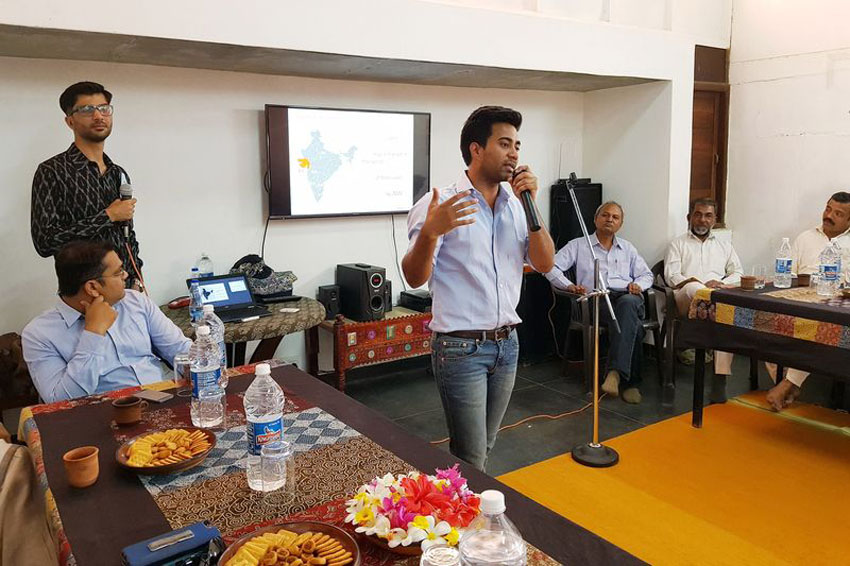 Aditya Agarwal makes a presentation
Aditya Agarwal makes a presentationNext to Khatri are other local talents. Pabi Ben, who can make beautiful embroidered bags. Vankara, a husband and wife, weaving thin cotton threads to create stoles and sarees. Ismail Muhammad, in the tenth generation, keeps the family tradition of block printing called ayrah, the fabric from which is later used to make clothes for fashion houses in Mumbai.
The teacher has not had time to go through all his slides on PowerPoint, as to him the flow of questions begins. “How do we know if people like our products?” Asks one of the artisans. The lecturer admits that customer reviews are only in English. “How are we going to take the money?” Says another. “What should I do if the buyer wants to return the item?” Pabi Ben worries.
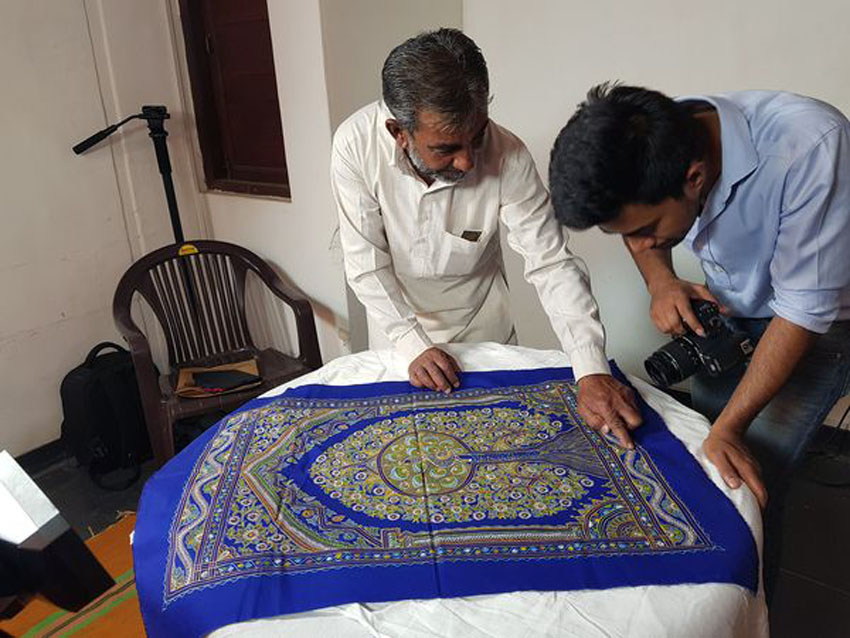 Khatri shows his product to the photographer
Khatri shows his product to the photographerHirji Vankar - 11th generation weaver from the neighboring village of Bhujodi. He has been selling saris and wrap troughs on Amazon for the past two months. He was invited to share his impressions and talk about the features of doing business online. Hirji says the Internet has helped his products find their customers in the “wide world”, and now he can put them up for a much better price. But he shares his troubles:
It takes several days to work on one thing. How can you be in reserve in such conditions? Some sarees have to be woven for months, but these grumbling buyers want delivery by morning. Like, they are so used.
Agarwal and Amazon's local government say that such training sessions are just the beginning. The company distributes instructional videos in the local language through WhatsApp. There, for example, they say that you need to keep a low profile - citing as an example a traditional artist who was so excited to receive his first online order, that he personally ran at 2 am to deliver it to the buyer.

Such classes help make e-commerce a little clearer for private artisans, and include them in the global market, says Gopal Pillay, director of merchant services for Amazon India. A week after practicing with Khatri, Pabi Ben and Hirji, thirteen masters from the neighborhood of Bhuj registered on the site as sellers. Six of them have already sold their items online for the first time.
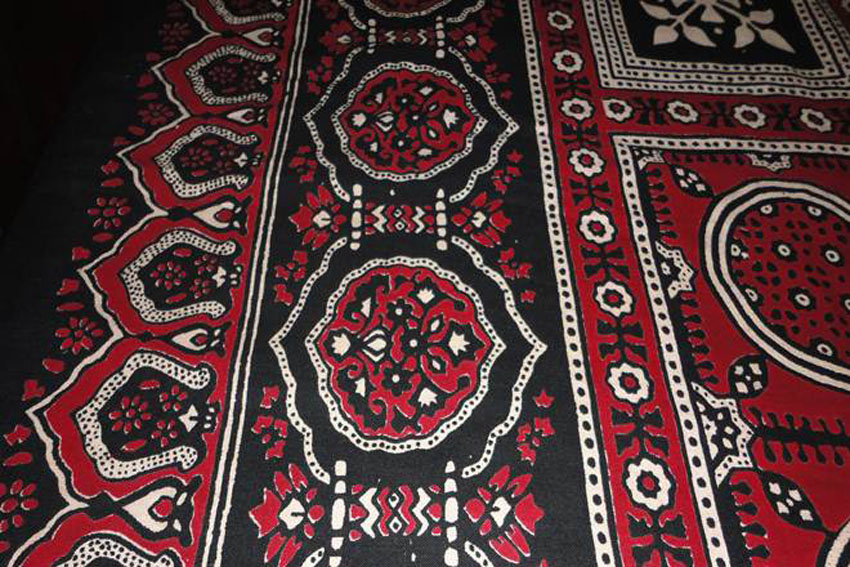 Airah fabric
Airah fabricAbdul Ghafoor, who traveled 40 kilometers from his village Niron to attend the lecture, began to see the potential of the Internet, but said that he also senses the disadvantages of this technology for himself and other masters:
I would rather think about creating new drawings than cluttering up my brain with these phone messages or videos.
For him, as for many Indian masters, who have witnessed the sunset of their craft with bitterness over the past decades, the offer of the Internet giant is still too tempting. One mat made in the style of rogan, on the site is sold for 5,000 rupees ($ 74). The leitmotif with the name Tree of Life is especially popular - after people learned that one such work, made by the Khatri family, was donated by Indian Prime Minister Narendra Modi, at the time, to US President Barack Obama.

Fabrics "embroidered" by the rogan method in Nirone
The dream of Abdul Gafur - that his craft does not die with him. He expects that if online orders are enough, he will be able to attract girls from the village to help him make simple rogan designs. Previously, craftsmanship was transmitted only among men of the Khatri family, but times are changing rapidly.
I can train a lot of young people in my village. This craft will have a future.
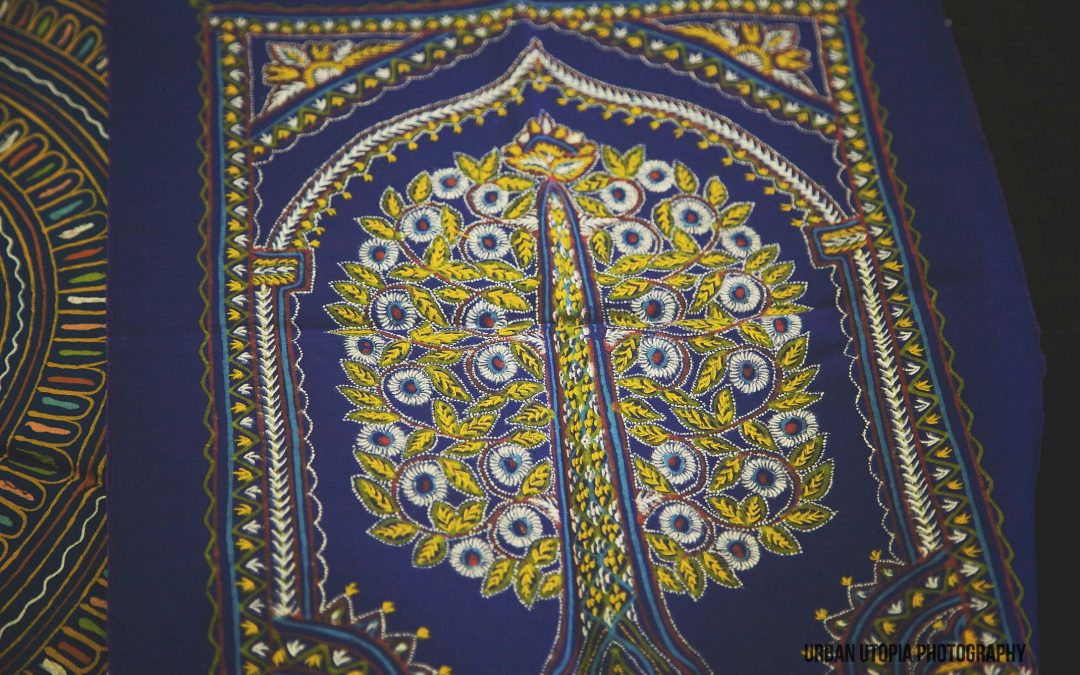 Tree of Life
Tree of LifePS Amazon doesn't like to send to Russia, but there is always Pochtoy.com. We deliver goods from any US stores. From $ 8.99 per pound. And $ 7 at the expense of readers who after registering with us enter the code Geektimes.